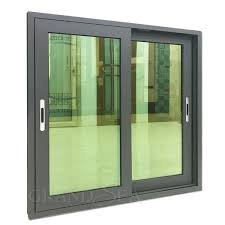Key Takeaways:
- Multi-zone mini-split systems provide precision climate control, allowing for significant energy savings by customizing temperature settings for specific home areas.
- Installation is less invasive than traditional HVAC systems since no ductwork is required, reducing energy loss and setup costs.
- With smart technology integrations, these systems enable efficient energy use management and offer convenient, remote, and programmable controls.
- These systems maximize home comfort while supporting sustainable living practices, making them a preferred choice for environmentally conscious homeowners.
Table of Contents:
- Introduction
- Understanding Multi-Zone Mini-Split Systems
- Benefits of Multi-Zone Mini-Split Systems
- Energy Efficiency Upgrades with Multi-Zone Systems
- Smart Controls and Technology
- Optimizing Home Comfort and Energy Use
- Conclusion
Introduction
In the ever-evolving landscape of home climate control, finding systems that balance energy efficiency with comfort is paramount for homeowners. Rising energy costs and environmental consciousness have spurred the search for solutions to deliver effective temperature management without inflating monthly bills. One such innovative solution is the multi zone mini split system. Known for their flexibility and precision, these systems promise significant energy savings while enhancing the comfort of living spaces. This article delves into the workings of multi-zone systems and their transformative impact on home energy efficiency, providing you with insights on how they can redefine your home environment.
Understanding Multi-Zone Mini-Split Systems
A multi-zone mini-split system provides a unique home heating and cooling approach by allowing for independent control of temperature settings in different areas or zones of a home. Unlike traditional HVAC systems that operate on a centralized basis, these systems enable a more targeted and energy-efficient way to manage personal comfort. A multi-zone mini-split system is ideal for homes with varying climate needs, allowing precision control over each room’s temperature. This feature is especially beneficial in homes with diverse layouts or those that experience varying external weather exposure. Ensuring each zone is adjusted according to occupancy and preference effectively minimizes wasted energy and maximizes comfort, making it an attractive option for households attentive to environmental impact and cost efficiency.
The system operates through individual air handlers installed in each zone, all connected to a single outdoor unit, simplifying installation and reducing the need for extensive ductwork. This flexibility also makes multi-zone mini-split systems an excellent choice for retrofitting older homes where adding ducts may be impractical or invasive. Additionally, many models come with advanced features such as remote control operation and programmable settings, further enhancing convenience and energy savings. The ability to heat or cool only the rooms in use reduces energy bills and extends the system’s lifespan by avoiding unnecessary strain. For homeowners prioritizing sustainability, many multi-zone systems use eco-friendly refrigerants, aligning with modern environmental standards.
Benefits of Multi-Zone Mini-Split Systems
The benefits of multi-zone mini-split systems extend far and wide. Key among them is their role in drastically reducing energy wastage. Traditional systems often maintain a uniform temperature throughout a home, leading to substantial energy use even when only specific areas are occupied. In contrast, multi-zone systems allow for targeted heating or cooling only where needed, facilitating notable energy savings. Further, the design of these systems eschews the need for extensive ductwork, eliminating energy losses commonly associated with air leakage in ducts. This leads to increased system efficiency and reduced utility bills over time. The installation process is often less invasive and quicker than traditional systems, as it requires fewer modifications to the home’s existing infrastructure, translating to cost savings from the outset.
Energy Efficiency Upgrades with Multi-Zone Systems
The customization offered by multi-zone mini-split systems plays a significant role in enhancing home energy efficiency. These systems allow users to customize heating and cooling schedules aligned with individual lifestyles, ensuring energy is only used when and where needed. The capability of these systems to achieve high SEER (Seasonal Energy Efficiency Ratio) ratings means that they are designed to provide maximum output with minimal energy input, further contributing to their efficiency. Homeowners can leverage the system’s ability to cut off climate control to unoccupied spaces, such as guest rooms or storage areas, reducing unnecessary energy expenditure. This adaptability is crucial for households embracing sustainable living practices without sacrificing comfort.
Smart Controls and Technology
Embodying the latest HVAC technology, modern multi-zone systems integrate advanced smart controls to enhance user convenience and system efficiency. Features such as programmable thermostats and remote access via smartphone applications allow homeowners to control their home environment with precision. Including innovative technology means these systems can be integrated into broader smart home ecosystems, allowing synchronized operations across devices. Users can set their systems to adjust temperatures based on daily occupancy schedules, ensuring rooms are only climate-controlled when necessary. The real-time monitoring capability offered by these systems allows for tracking and analyzing energy consumption, providing valuable insights into energy use that guide more informed decision-making. These technological advancements underscore a shift towards intelligent climate management, where energy efficiency is optimized through seamless user interaction.
Optimizing Home Comfort and Energy Use
Beyond improving energy efficiency, multi-zone mini-split systems enhance overall home comfort. They provide the flexibility to set different conditions in different parts of the home, catering to the varying preferences of all household members. The quiet operation of these systems ensures comfort isn’t compromised by noise pollution, and with less invasive installation, the transition to using them is smooth without extensive modifications required. As modern families seek to balance comfort with efficiency, the capability of multi-zone systems to offer personalized climate control aligns with the needs for tailored living environments. In ensuring that each room or zone maintains its ideal climate, these systems support wellness at home by effortlessly accommodating diverse lifestyles and routines.
Conclusion
Multi-zone mini-split systems present a significant advancement in home climate control. By offering the ability to precisely manage temperatures in distinct zones, they minimize energy wastage and offer an environmentally conscious alternative to conventional HVAC systems. Integrating innovative technology not only boosts their efficiency but also enhances the ease of use, making them a compelling investment for those looking to reduce energy costs and carbon footprints. In a world where energy conservation is as crucial as personal comfort, these systems are ideal for modern homes seeking sustainable comfort solutions.




